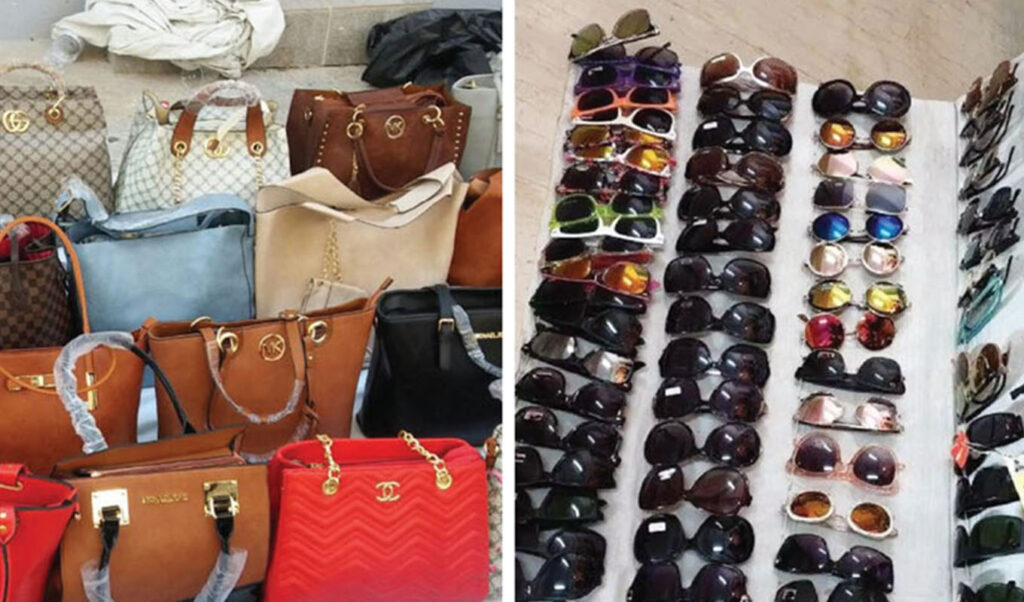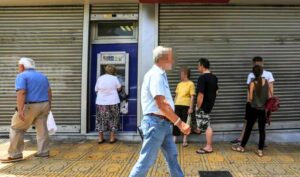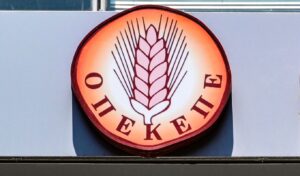Me and my monkey! Exactly right. This time we’re not focusing on the timeless success of Robbie Williams -who, all being well, will offer us an explosive live show at the Kallimarmaro on October 2, 2025, which, notably, has been sold out for some time now- but on counterfeit products: they tend to spread even more, like a pandemic now, not just an epidemic.
The heart of Athens, Kifissia, Chalandri (where “hideouts” also occasionally “flourish”), Peristeri, Thessaloniki, Kilkis, Komotini, Rhodes, Achaia, Heraklion Crete and Chersonissos have, in recent years, been consistently in the crosshairs of authorities, as they distribute -on a vast scale- branded imitation goods.
With a turnover of over half a trillion dollars internationally, also consistently, but with even more upward trends now -despite the actions and measures of authorities- due to the unbearable tariffs on foreign products in the US from Donald Trump, the trade in counterfeit products, according to the Organisation for Economic Co-operation and Development, is experiencing glorious times. The best of all times, in fact. The percentage exceeds 3% of the total import volume of global trade, with number experts (“Forbes”, “Fortune”) predicting further increases.
Tariffs and “strangulation”
Donald Trump’s enormous tariffs on products originating outside the US -which, as is known, also apply to specific states within the United States itself- have already made the operation of millions of businesses unprofitable, “strangling” them. Especially the viability of fashion and beauty houses, which make every consumer feel if nothing else more beautiful about themselves (it’s no coincidence that the term shopping therapy in people’s consciousness is not associated with buying food, but with purchasing clothing and luxury items), is not simply precarious, not simply directly threatened, but hanging by a thread.
If we consider that millions of businesses around the globe have -in a way- legitimized (for many years now) their counterfeit products, characterizing them as Gucci “type”, Chanel, Armani (the latter are the most popular in perfumery -fortunately, in this case, we don’t see much Miyake, the house whose fragrances for men and women rank among the top 3 globally), you can easily understand that the situation is out of control.
China showed the way
Three years ago, China destroyed huge quantities of counterfeit brand products, such as Nike and Louis Vuitton, as part of an event held in 17 provinces and cities. The Chinese government’s initiative “showed the way,” according to Bloomberg: they destroyed 3,000 tons of counterfeit products, valued at $69,000,000. In another case, through websites, “rebels” of legality, a gang in simple Greek terms, distributed fake Prada, achieving an annual turnover of 1,500,000 euros.
The countries that see their product property rights violated most by “fakes” are the US and, among Europeans, Italy, France and Switzerland. In this regard, also consider PDO (Protected Designation of Origin) products, because the “game” clearly also concerns food and drink, French cheeses for example, Swiss chocolates, Italian olive oil, and you have composed the picture.
Classic illustrated…
Counterfeits, according to current research, extend to everything, even to strawberries and bananas and chemical products. But the most widespread and easily sold, hence they remain at the top of the list of smugglers everywhere, counterfeit products continue to be athletic shoes. And Rolex (watches). Classically illustrated, in other words. The top method a decade ago was postal packages (we’re talking about 62% of seizures between 2011-13), but now their electronic commerce distribution seems unstoppable.
It’s carried out in a thousand and one ways. Smuggling is at its peak and if the turn to quality, therefore to authenticity, is a trend, who has the money to acquire the original? Who will save for La Mer cosmetics, for a Milanese shoe -and suit, which has the best tailoring-, for Venetian lace? The illegal profits are… better, they’re not taxed after all. And somehow, we end up with the cliché “show me the money”!
*Published in Parapolitika




